In the second quarter of 2018, one in which the global economy was shaken by the rapid escalation of Trump’s trade war, and in which central banks were one after another hinting at their own QE tapering and rate hiking intentions to follow in the Fed’s footsteps, what was really taking place was another central bank buying spree meant to boost confidence that things are now back to normal, using “money” that was freshly printed out of thin air, and spent to prop up risk assets around the world by recklessly buying stocks with no regard for price or cost.
| Nowhere was this more obvious than in the latest, just released 13F from the massive hedge fund known as the “Swiss National Bank.” What it showed is that, just like in the prior quarter, and the quarter before that, and so on, the Swiss central bank went on another aggressive buying spree and following a modest selloff in the first quarter which was a mirror image of the SNB’s buying spree during Q1 2017 – the Swiss central bank boosted its total holdings of US stocks to $87.5 billion, up 6.6% or $5.4 billion from the $82.0 billion at the end of the first quarter, and just shy of their all time high.
On a share basis, the SNB added some 33.659 million shares to its total holdings of US stocks, which at the end of Q2 stood at 1.320 billion. Some notable observations: in the second quarter, after the SNB printed money out of thing air, it then added 4.85 million shares of AT&T, 673K shares of MSFT, 305K shares of AAPL, 272K shares of FB, 46K shares of AMZN, 423K shares of XOM. And according to some calculations, the SNB’s portfolio now generates over $1 billion worth of dividends, or as @SheepleAnalytics notes, “they print money and we ship them our profits.” While we are far beyond the point of debating central bank intervention in equity markets (we do want to remind readers that until several years ago, it was considered “fake news” to even mention it, and those who accused central bankers of manipulating stock markets were said to be paranoid tinfoil basement dwellers), we want to point out that unlike the BOJ, which at least keeps its capital markets distortion local, the SNB, which likewise creates money out of thin air (then sells it for dollars in an attempt to keep the Swiss franc depressed) is actively causing substantial price distortions in the US while collecting billions in annual dividends from US corporations which are then remitted to various Swiss cantons and regional governments to fund local growth. |
SNB US Stock Holdings, Jun 2014 - 2018(see more posts on SNB US Stock Holdings, ) |
| While we doubt this will be investigated with stocks at all time highs, we look forward to the Congressional hearings after the crash when the scapegoating and fingerpointing begins as it always does, and everyone is “stunned” to learn that central banks were responsible for blowing the biggest asset bubble the world has ever seen by directly buying stocks.
What else did the SNB reveal in its 13F? Two main things: First, its top 20 holdings are as shown in the following chart. The central bank was clearly not shy in adding to its top positions. And more notably: it was most aggressive in adding to tech names, just in case there is still confusion why with the rest of the stock market flat YTD, it was tech names that drove the S&P500 higher. |
SNB Holdings(see more posts on SNB Holdings, ) |
| And while we have yet to learn if Warren Buffett was actively frontrunning the SNB once again during the quarter by buying even more AAPL shares, something the Berkshire 10Q suggested is very likely, a look at the SNB’s holdings of AAPL stock shows that after some modest selling in the first quarter, in Q2 its AAPL holdings again increased modestly from 16.570 million to 16.874 million shares, making the SNB a larger holder of Apple than Franklin Resources, Dimensional and the State of New York (with 16.7, 16.2, and 14.1 million shares respectively), and just behind Janus with 19.4 million shares, demonstrates one of the main reasons why the Nasdaq has continued to hit new all time highs on a daily basis for much of 2018.
The chart above also explains why unlike Morgan Stanley, which for the past month has been urging clients to exit their tech holdings, Goldman Sachs remains bullish on tech stocks and the Nasdaq: after all, when a central bank can and does create money out of thin air, then splurges on the handful of tech companies that have the biggest impact on the broader market, pushing both the Nasdaq and all indices higher, what is the point of even talking about “risk”? |
SNB US Stock Holdings, Jun 2014 - 2018(see more posts on SNB US Stock Holdings, ) |
Full story here Are you the author? Previous post See more for Next post
Tags: newslettersent,SNB Holdings,SNB US Stock Holdings









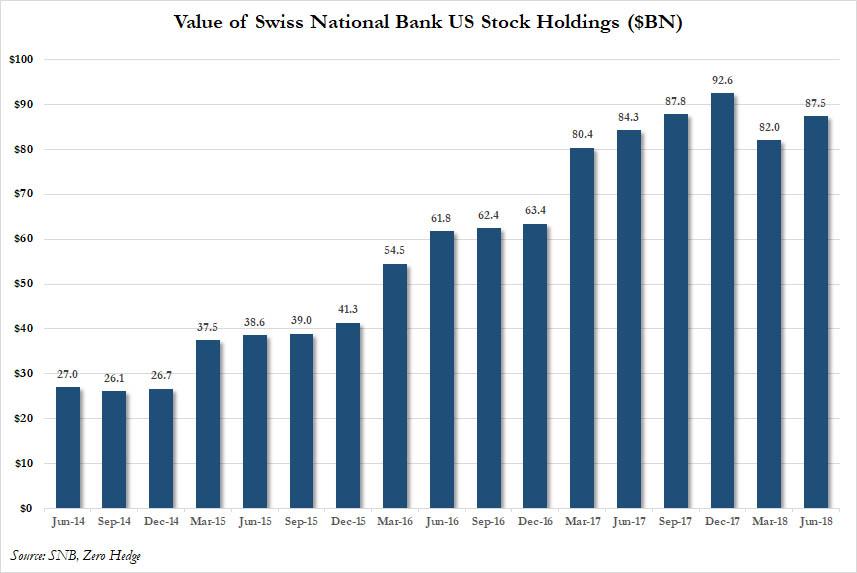
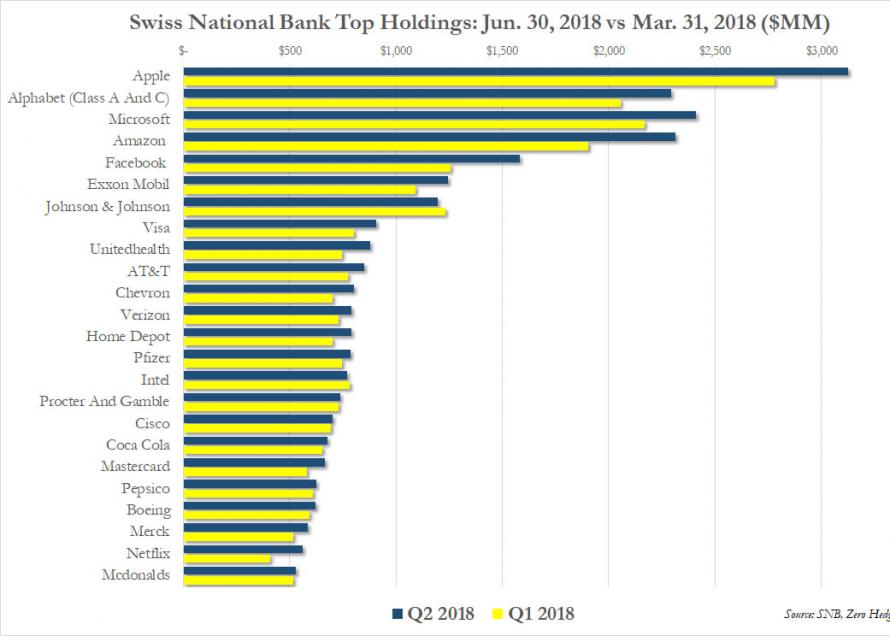
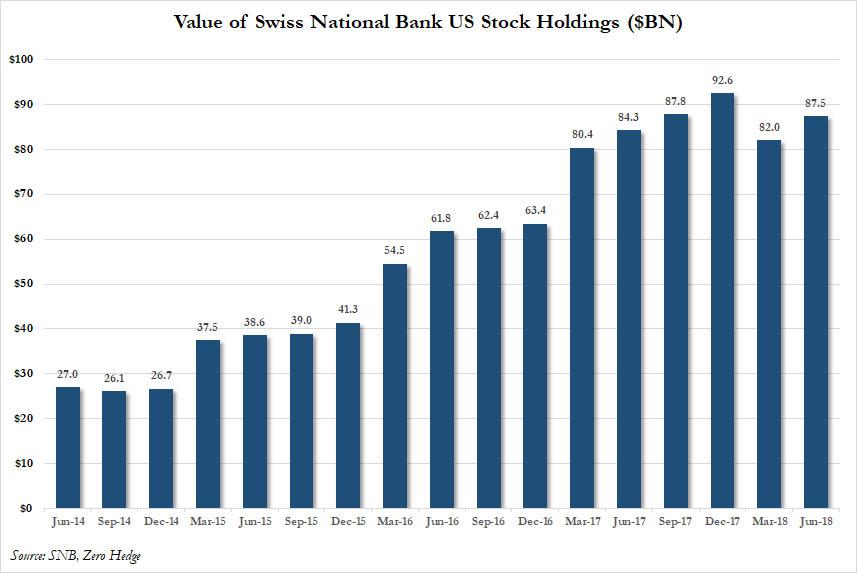


















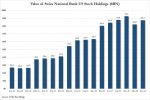


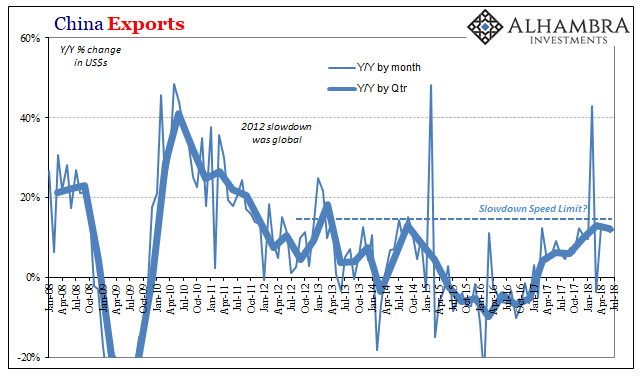




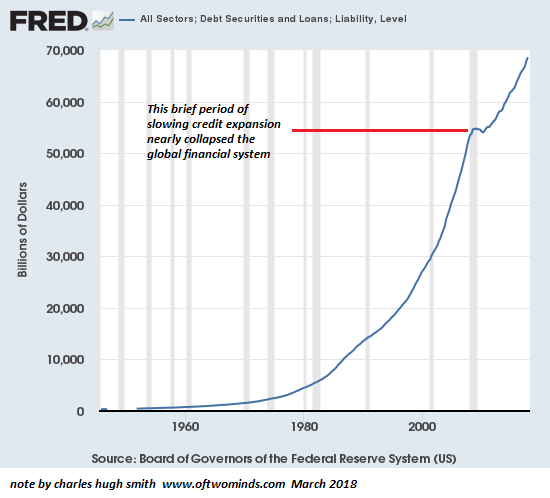

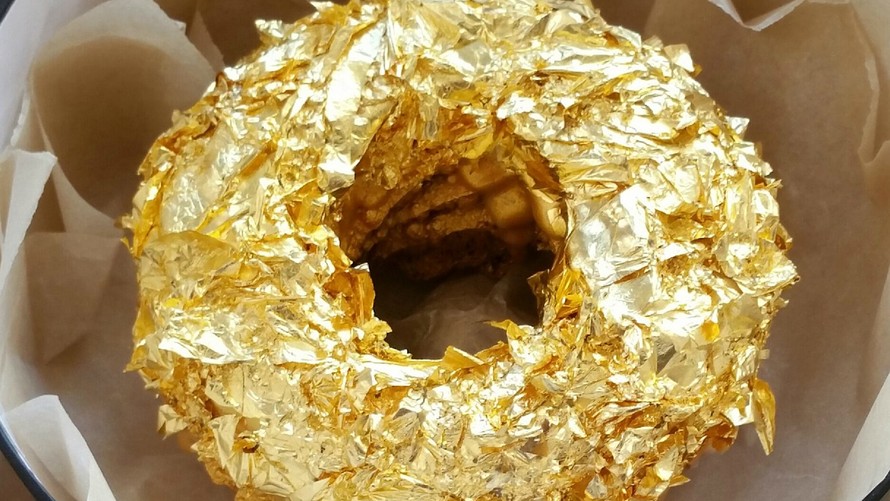
2 comments
Stefan Wiesendanger
2018-08-10 at 18:39 (UTC 2) Link to this comment
The SNB does not do stock-picking like insinuated above. It replicates the broad market. So there was no “loading up” on tech stocks.
Also, the SNB does not create purchasing power out of thin air. After even a cursory look at the Swiss current account over the past years, it is strikingly obvious that the SNB purchases are financed by real, hard Swiss savings. What the SNB does has a lot in common with buying gold in the good old days of the Gold Standard. It has nothing to do whatsoever with the exorbitant privilege of the USD which lets the US enjoy the seignorage of the liquidity in all of global trade.
Since these Swiss savings are generated in their trading with the rest of the world, they exist in the the form of an asset of a Swiss entity, otherwise stated a debt of a foreign entity. If this debt changes hand from the Swiss entity to the SNB cannot be called distortionary, and if it is exchanged from honestly earned USD cash to US stocks is not distortionary either. Considering that the asset allocation of the SNB is 80% foreign government bonds vs. only 20% foreign stocks, the allocation ratio to stocks is not distortionary, either.
All considered, the above article requoted from ZeroHedge is misinformed and grossly misleading.
Fred Crossman
2018-12-26 at 20:22 (UTC 2) Link to this comment
http://lionscrestcapital.com/uploads/3/4/1/8/34182934/globalcbbalance-sheets-1024x704_orig.jpg
This above chart of the massive Central Bank expansion was not created from workers’ tax dollars. It was not generated from the respective countries GDP. In the US, where did the Fed get the $3.5 tril to buy $3.5 tril in US treasury and mortgage bonds (QE) in 4 years? From the taxpayer? What do you call the $2 tril in Treasury bonds created out of thin air by the Treasury that the Fed bought? The Fed and Treasury call these bonds assets. We the People call them debt.